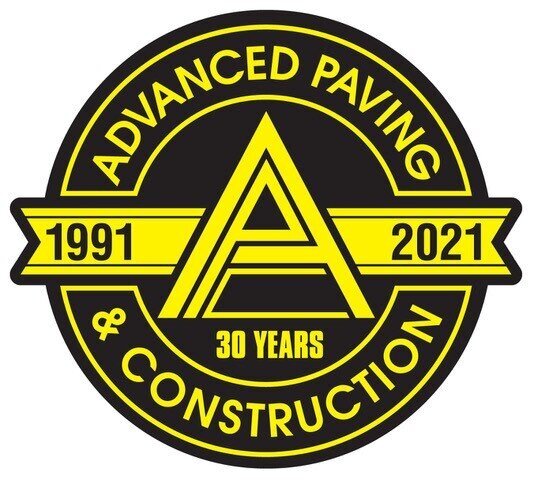Different types of asphalt damage
Alligator Cracking
WHAT IS ALLIGATOR CRACKING?
Alligator or fatigue cracking is a series of interconnecting cracks caused by fatigue failure of the asphalt surface under repeated traffic load.
- Cracking begins at the bottom of the asphalt surface (or subgrade) where tensile stress and strain are highest under a wheel load.
- Alligator cracking occurs most commonly in areas subjected to repeated traffic loads, such as wheel paths.
- Alligator cracking is known as a high-severity structural distress
- Typical alligator cracking sections are less than one foot on the longest side
- It is referred to as "alligator cracking" due to the similar looking texture that it shares with alligator's skin patterns.
Rutting
WHAT IS RUTTING?
Rutting is a surface depression located within the wheel paths. Pavement uplift will occur along the sides of the rut.
- Rutting is started by a permanent deformation in any of the pavement’s layers or sub-base commonly caused by heavy load distress such as garbage trucks repeatedly traveling over the same area.
- These depressions and grooves are most commonly caused by lateral movement of the asphalt and sub-base layers due to traffic load.
- Significant rutting can lead to high-severity structural failure in the pavement, sub-base, and surrounding earth-like materials.
- Ponding occurring within rutting areas will only increase the pavement's deterioration exponentially.
Potholes
WHAT ARE POTHOLES?
Potholes are small, bowl-shaped depressions in the pavement surface that are most commonly under 3 feet in diameter. They generally have sharp edges and vertical sides near the top of the hole.
- Their growth is accelerated by free moisture collection inside the hole.
- Potholes are produced when traffic slowly dislodges small pieces of the pavement surface over time.
- Potholes are generally high-severity related distresses as they can cause significant liability concerns.
WHAT IS LONGITUDINAL CRACKING?
Longitudinal cracks are parallel to the pavement's centerline or laydown direction. They may be caused by:
- Shrinkage of the asphalt surface due to low temperatures or hardening of the asphalt and/or daily temperature changes
- Reflective cracking caused by cracking beneath the asphalt surface course
- Cracks may appear beneath the earth and pavement when earth-like material such as clay, peat, or the sub base starts to deteriorate from the bottom up
Longitudinal Cracking
WHAT IS TRANSVERSE CRACKING?
Transverse cracks extend across the pavement at 45 to 90 degree angles to the pavement's centerline.
- Shrinkage of the asphalt surface due to low temperatures or hardening of the asphalt and/or daily temperature changes
- Reflective cracking caused due to the hardening of the asphalt
- Transverse cracks are usually not related to medium-severity load distresses
- Cracks may appear beneath the earth and pavement when earth-like material such as clay, peat, or the sub base starts to deteriorate from the bottom up.
Transverse Cracking
WHAT IS BLOCK CRACKING?
Block cracks are interconnected cracks that divide the asphalt surface course into rectangular pieces.
- The blocks may range in size from approximately 1’ by 1’ to 10’ by 10’.
- Block cracking is also caused by the shrinkage of the asphalt surface due to low temperatures or hardening of the asphalt and/or daily temperature changes
- Block cracking is not a load related distress
- Cracks may appear beneath the earth and pavement when earth-like material such as clay, peat, or the sub base starts to deteriorate from the bottom up.
Block Cracking
WHAT IS PATCH DISTRESS?
Patch distress occurs when a patch repair is completed in one or more areas in an existing asphalt parking lot. While attempting to bring the pavement back to like-new conditions, the patch work may experience a combination of the other 8 distresses.
- Patch distress can occur in asphalt removal and replacement applications as well with asphalt overlays
- Many patch distress instances occur due to improper drainage and load distress once the repair is completed, due to the drainage problem not being properly resolved
- May results in ponding of water along edges of patch
- However, patch repair is still the more cost-effective solution in comparison to a more complete rehab such as removal and replacement or resurfacing of the entire area.
Patch Distress
WHAT CAUSE DEPRESSIONS IN ASPHALT?
Depressions in asphalt are formed due to improper construction and/or a combination of both inadequate base and load distress.
- When moisture infiltrates pavement, it tends to undermine the stone base causing it to hold water. This happens most commonly in longitudinal cracking.
- Depression is also the first warning sign of alligator cracking and potholes. It is strongly recommended to perform removal and replacement of the surrounding area to ensure proper drainage.
- Asphalt depression sizes commonly fall between 1/2" to 1 1/2" depth.
Depressions in Asphalt
WHAT IS WEATHERING?
The weathering of asphalt presents itself in two main ways; oxidation and raveling.
- As the pavement cures, the sun's ultra-violet rays harden and dry out the asphalt surface in a process known as oxidation.
- Raveling is when the asphalt surface becomes dry and brittle and small stones break loose from the surface.
- Accelerated raveling can reduce the asphalt surface by as much as half its thickness in 10-15 years.
- The best defense against oxidation and raveling is to sealcoat the pavement within 1 to 5 years of installation.
